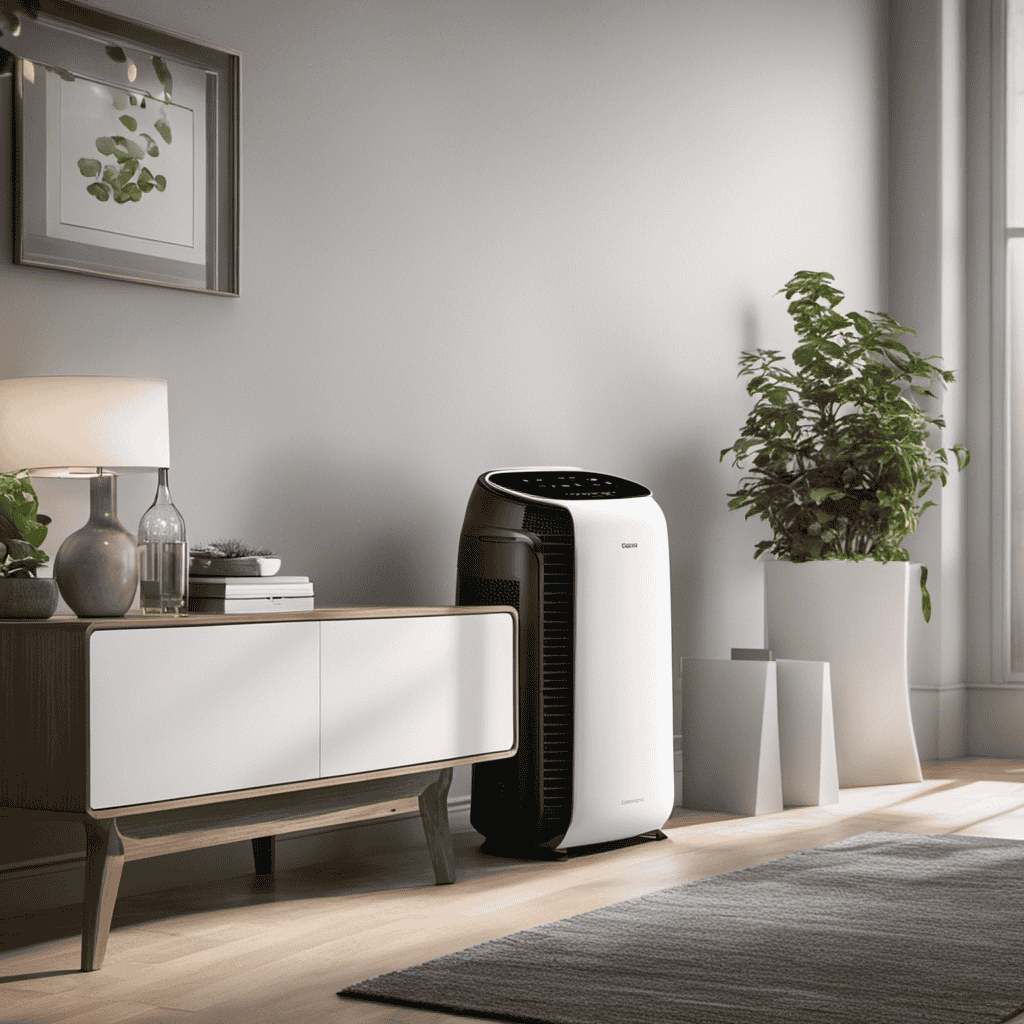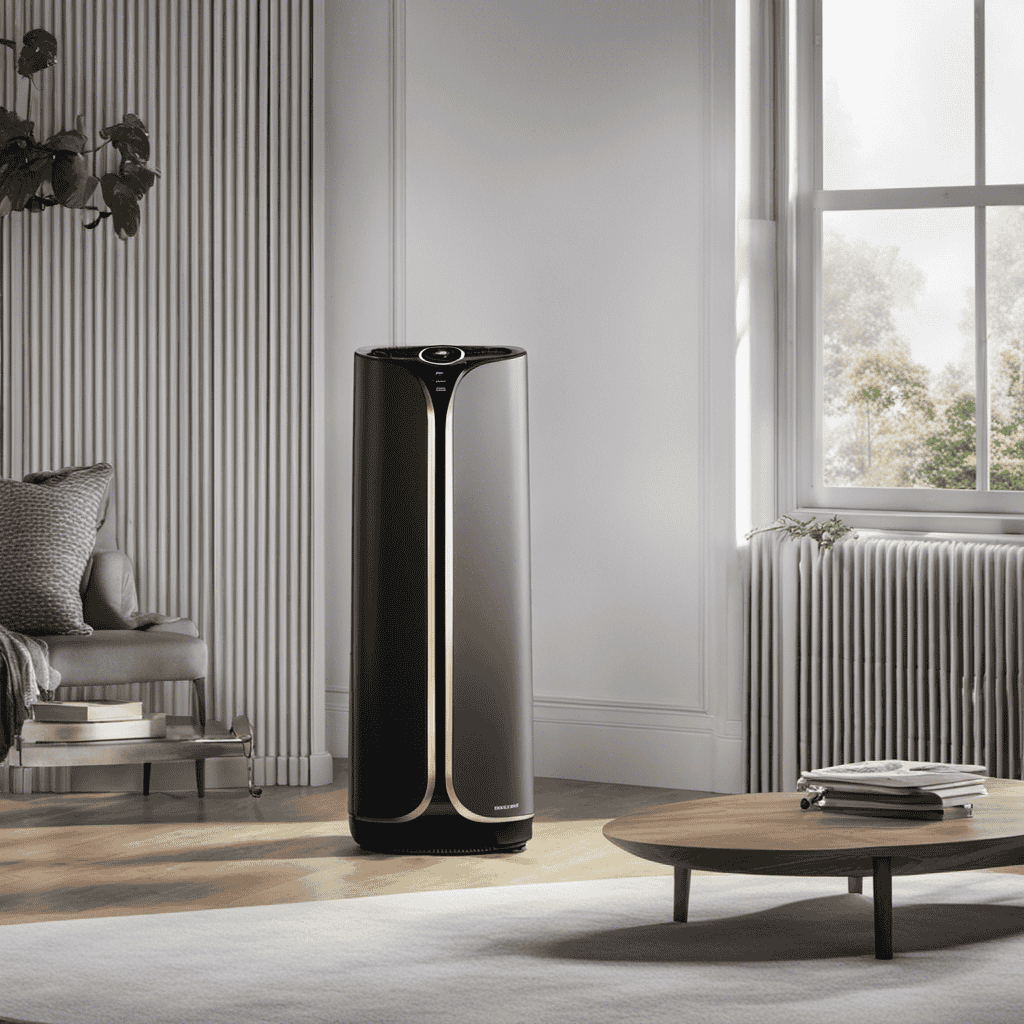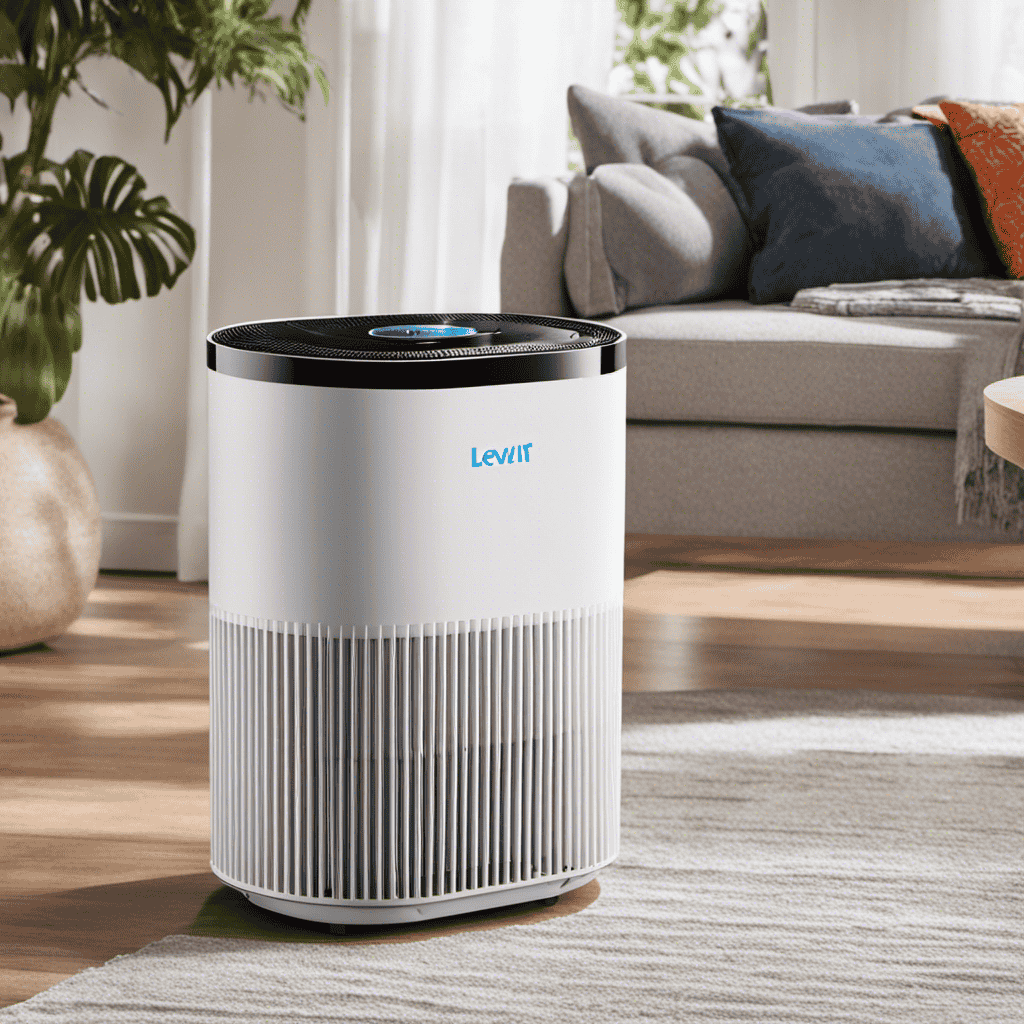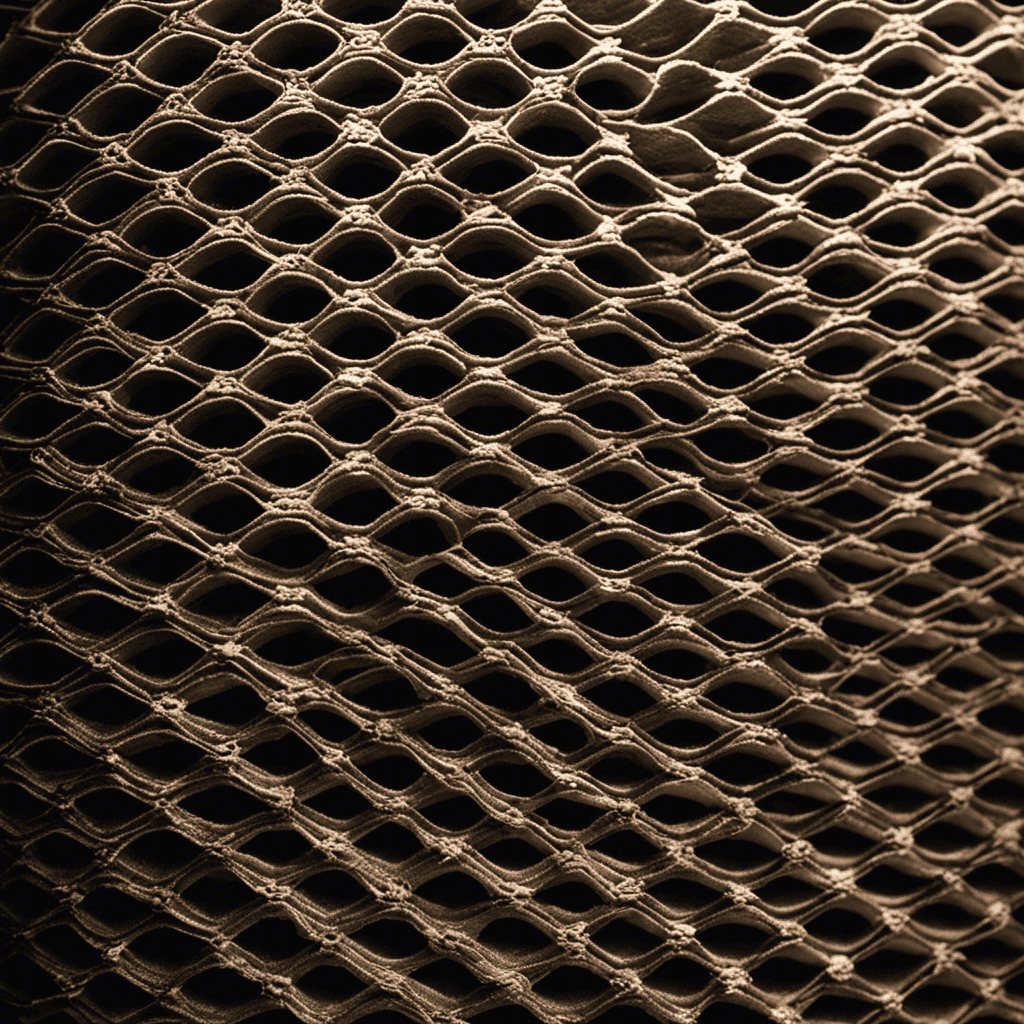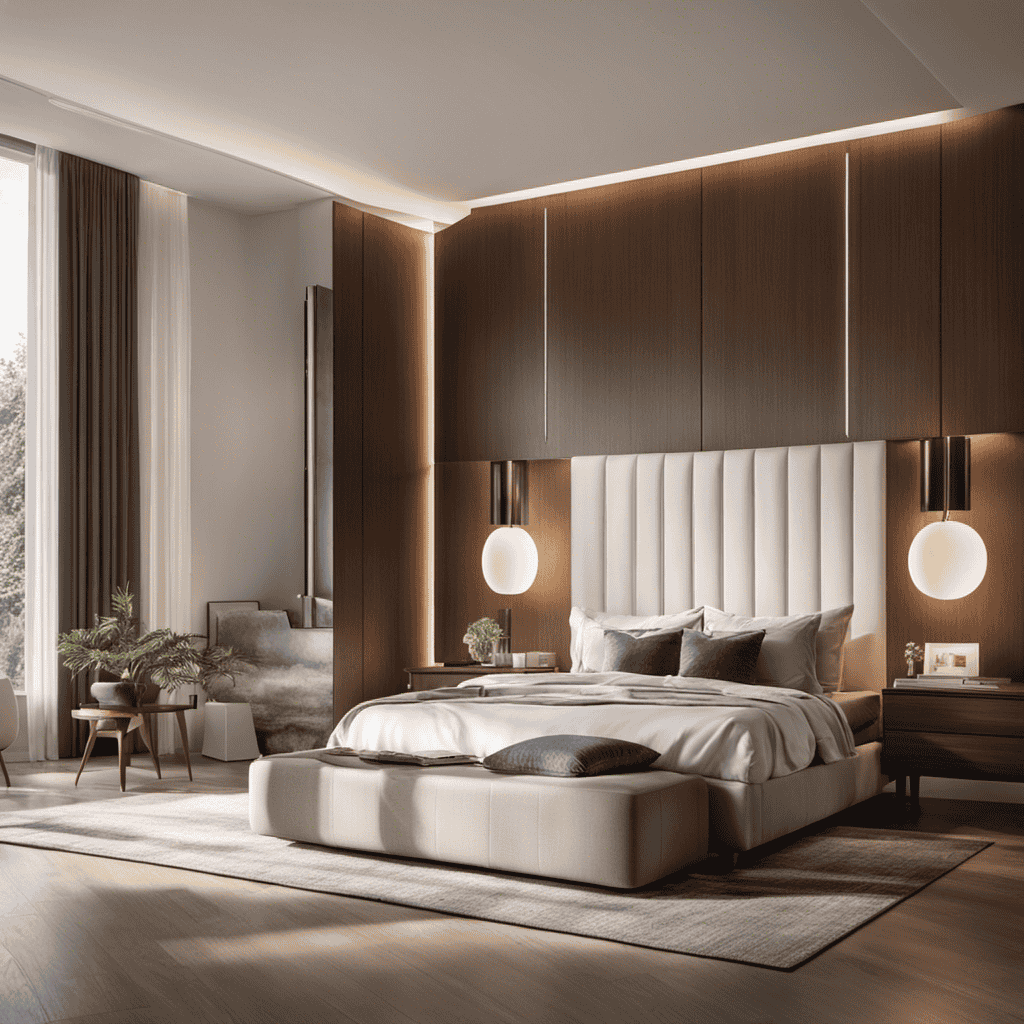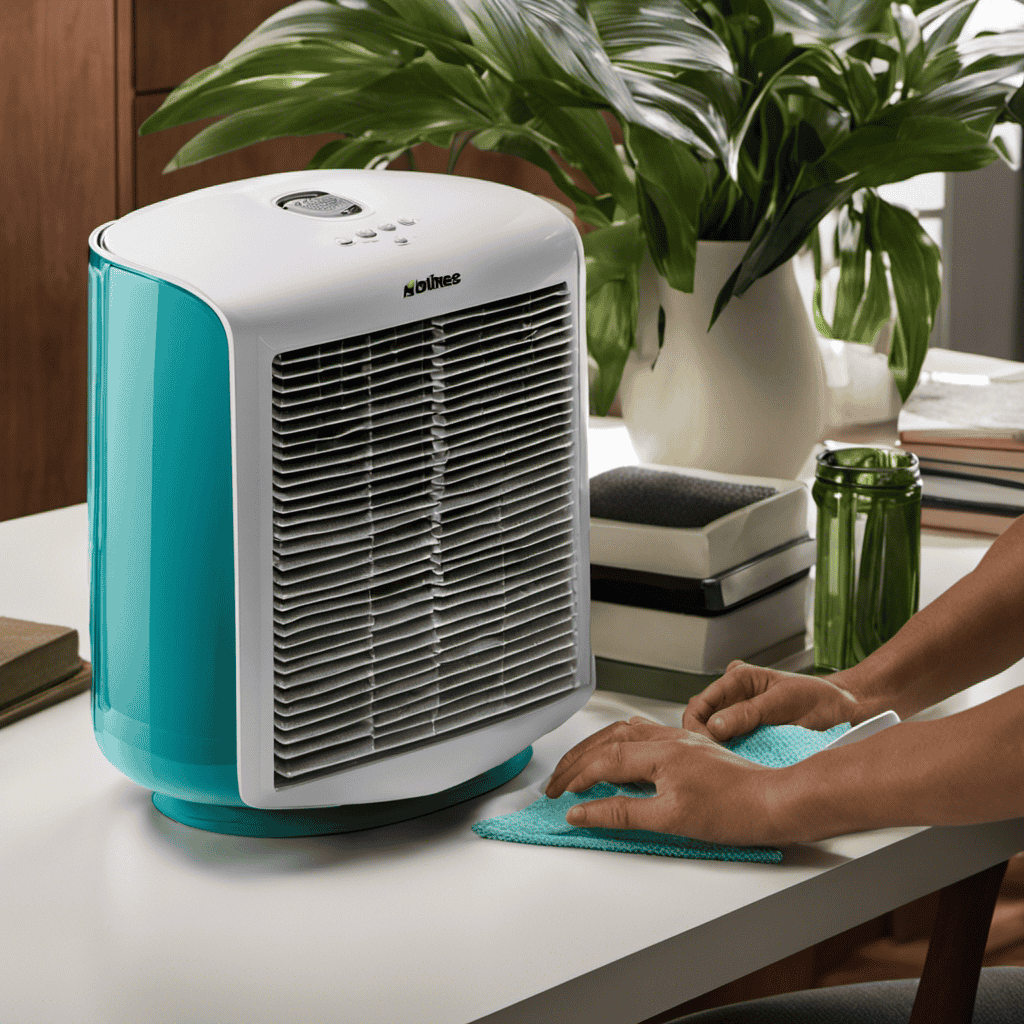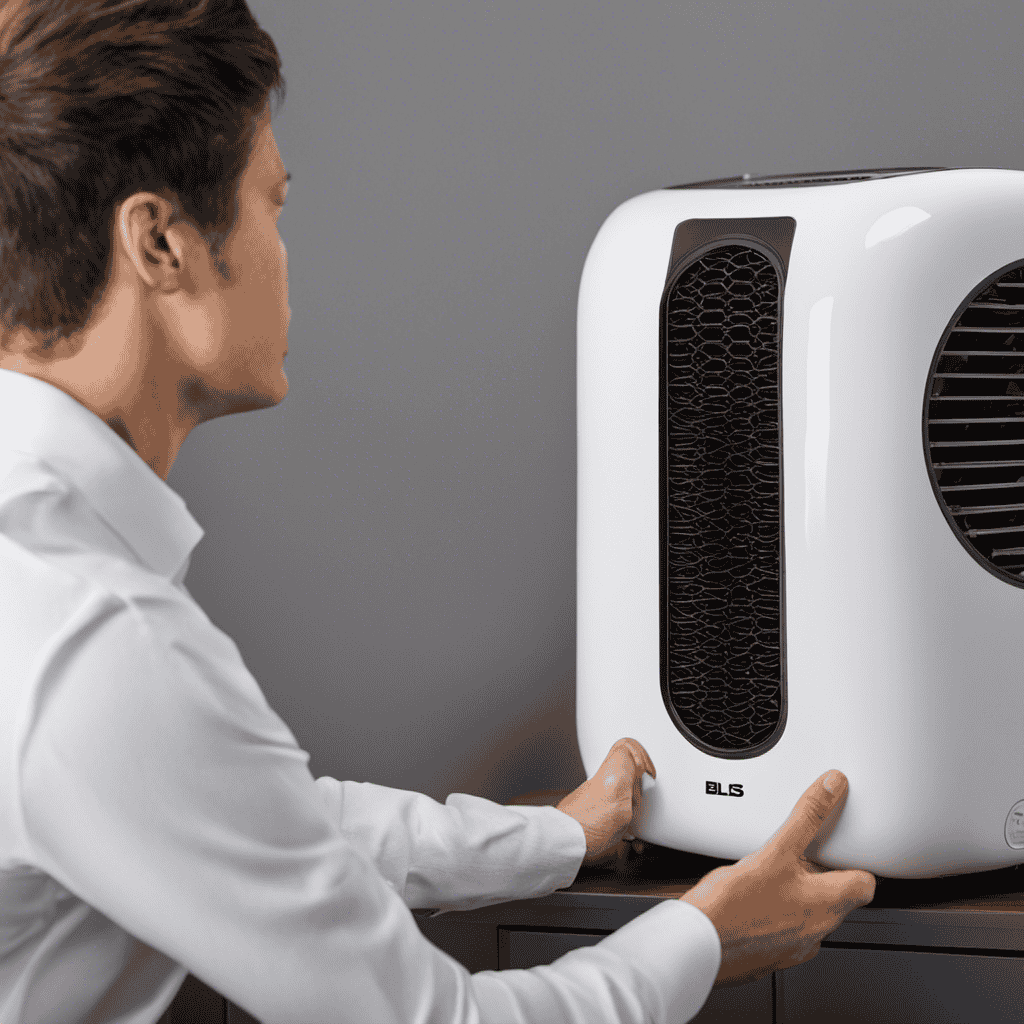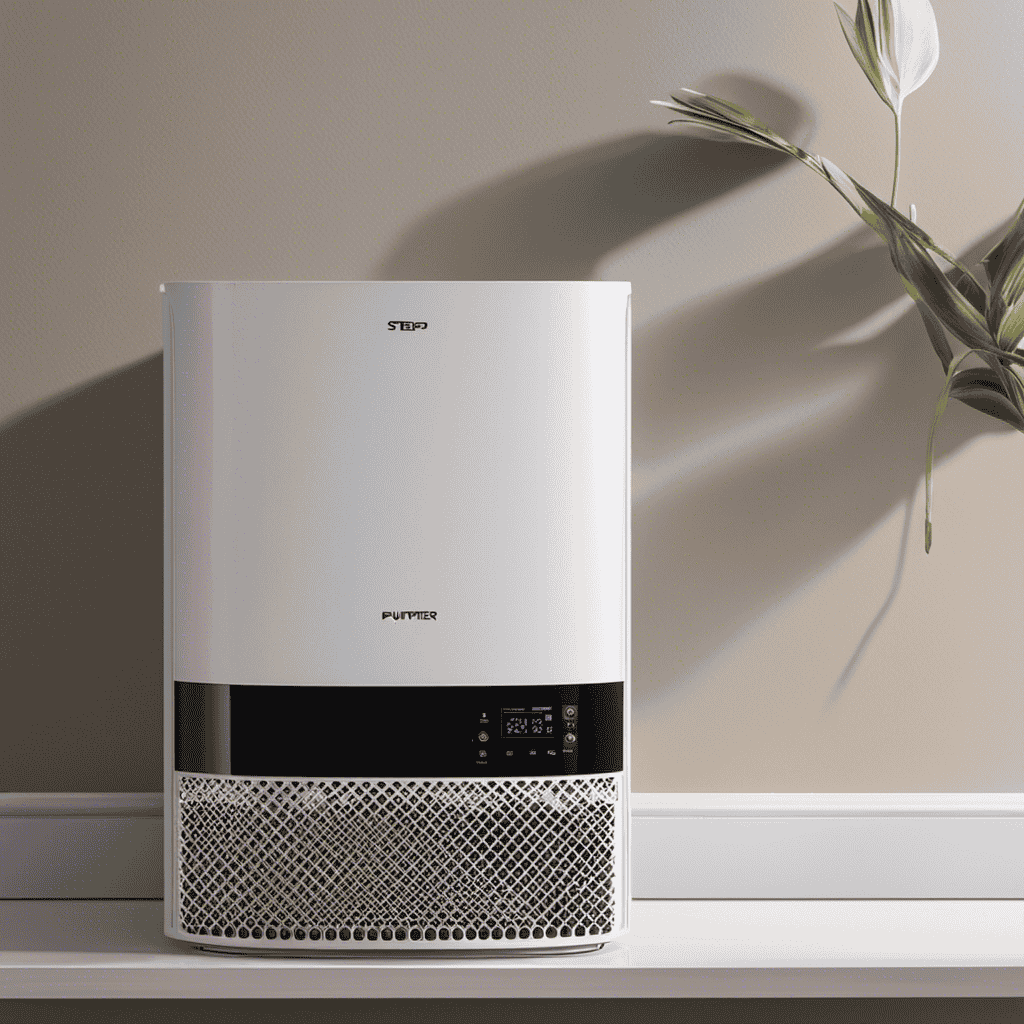Did you catch on that the air inside a house can be up to five times dirtier than the air outside? With more and more folks worried about air quality, they’re switching to gadgets such as air purifiers and dehumidifiers to make their homes healthier. For those looking to breathe fresher air and live better, these devices can make a real difference.
But what exactly is the difference between these two appliances? In this article, I will break down the functionality, targeted contaminant removal, impact on indoor air quality, humidity control, and how to choose the right device.
Let’s dive in and find out which one suits your needs best.
Key Takeaways
- Dehumidifiers remove excess moisture from the air, while air purifiers filter out airborne particles.
- Both dehumidifiers and air purifiers contribute to a healthier living environment by improving indoor air quality.
- Dehumidifiers prevent the growth of mold and mildew, while air purifiers remove allergens and improve air quality for individuals with allergies or respiratory conditions.
- When choosing a device, consider factors such as size, capacity, noise level, ease of cleaning, energy-saving features, and impact on electricity bills.
Functionality
If you’re looking for a device that removes excess moisture from the air, a dehumidifier is what you need. It is a highly functional appliance that helps maintain a comfortable indoor environment.
When it comes to energy consumption, dehumidifiers are designed to be efficient. They use less power compared to other appliances, making them cost-effective and environmentally friendly.
In terms of maintenance requirements, dehumidifiers are relatively easy to maintain. Regular cleaning of the filter and emptying the water tank are the main tasks involved. Some models even come with self-cleaning features, reducing the need for manual cleaning.
Overall, dehumidifiers are an excellent choice for reducing humidity levels in your home while keeping energy consumption and maintenance requirements in check.
Targeted Contaminant Removal
One key benefit of an air purifier is that it helps remove specific contaminants from the air, while a dehumidifier focuses on reducing moisture levels in the environment.
Air purifiers are designed to filter out airborne particles, such as dust, pollen, pet dander, and smoke. They use various filtration techniques, including HEPA filters, activated carbon filters, and UV-C light technology, to capture and remove these particles, improving the overall air quality in the room.
On the other hand, dehumidifiers work to reduce the humidity levels in the air, which helps prevent the growth of mold and mildew. By extracting excess moisture, dehumidifiers create an environment that is less conducive to mold growth.
Both air purifiers and dehumidifiers play a crucial role in improving indoor air quality and creating a healthier living space.
Impact on Indoor Air Quality
Both air purifiers and dehumidifiers significantly improve indoor air quality by targeting specific contaminants and reducing moisture levels, respectively.
Air purifiers are designed to remove airborne allergens such as dust, pollen, pet dander, and mold spores from the air. They use filters to trap these particles and prevent them from circulating in the room. This can greatly benefit individuals with allergies or respiratory conditions.
On the other hand, dehumidifiers focus on reducing humidity levels in the air, which helps prevent the growth of mold and mildew. By removing excess moisture from the environment, dehumidifiers create a less hospitable environment for mold to thrive. This is particularly important in areas with high humidity or in basements where moisture tends to accumulate.
Both air purifiers and dehumidifiers play important roles in improving indoor air quality and creating a healthier living environment.
Humidity Control
You can control humidity levels in your home using a dehumidifier, which helps prevent the growth of mold and mildew. Maintaining optimal humidity levels is important for both your health and the health of your home. Here are some key benefits of managing humidity levels:
-
Reduces the risk of respiratory issues: High humidity levels can promote the growth of allergens such as mold and dust mites, which can trigger asthma and allergies. Using a dehumidifier helps to reduce these allergens, improving indoor air quality and reducing the risk of respiratory issues.
-
Prevents the growth of mold and mildew: Excess humidity creates a favorable environment for mold and mildew growth. By removing excess moisture from the air, a dehumidifier helps to prevent the growth of these harmful substances, which can cause respiratory problems, skin irritations, and other health issues.
-
Protects your home: High humidity levels can damage your home by causing structural issues, such as warping wood, peeling wallpaper, and deteriorating paint. Using a dehumidifier helps to maintain optimal humidity levels, protecting your home from such damages.
-
Improves comfort: High humidity levels can make you feel sticky and uncomfortable. By removing excess moisture from the air, a dehumidifier helps to create a more comfortable living environment.
-
Increases energy efficiency: Moist air feels warmer than dry air, causing you to use more energy to cool your home. By reducing humidity levels, a dehumidifier helps to increase energy efficiency and reduce cooling costs.
Choosing the Right Device
When choosing the right device, consider factors such as size, capacity, and noise level.
It’s important to find a device that fits well in the space you plan to use it in. Additionally, you’ll want to consider the capacity of the device to ensure it can handle the size of the room or area you want to purify or dehumidify.
Noise level is also an important factor, especially if you plan to use the device in a bedroom or office where you need a quiet environment.
In terms of maintenance requirements, be sure to choose a device that is easy to clean and maintain.
Lastly, energy efficiency is a key consideration as it can impact your electricity bills. Look for devices that have energy-saving features or certifications to ensure they use minimal energy while still effectively purifying the air or removing excess moisture.
Is a Dehumidifier Also Effective in Removing Allergens and Pollutants Like a Hepa Air Purifier?
Yes, a dehumidifier can help reduce allergens and pollutants like a HEPA air purifier. While a dehumidifier primarily removes excess moisture from the air, it can also indirectly reduce allergens by creating an inhospitable environment for dust mites, mold, and mildew, hepa air purifier benefits explained.
Frequently Asked Questions
Can an Air Purifier Remove Odors From the Air?
Yes, an air purifier can effectively remove pet odors and eliminate cigarette smoke. By using filters and other technologies, it captures and neutralizes odorous particles in the air, leaving it fresh and clean.
Do Dehumidifiers Also Remove Dust and Allergens From the Air?
Yes, dehumidifiers can also remove dust and allergens from the air. While air purifiers are effective at removing airborne particles, dehumidifiers offer additional benefits by reducing moisture levels, which can help prevent the growth of mold and mildew.
Can an Air Purifier Help With Respiratory Conditions Such as Asthma and Allergies?
Yes, air purifiers can help with respiratory conditions like asthma and allergies. They remove airborne particles such as dust, pollen, and pet dander. Air purifiers can be used in offices or commercial spaces to improve air quality.
How Often Should I Clean or Replace the Filters in an Air Purifier?
I clean or replace the filters in my air purifier every 3-6 months to ensure optimal performance. It’s important to choose the right air purifier for your needs, considering factors like room size and specific air quality concerns. Additionally, using a dehumidifier in your home can help reduce excess moisture and prevent mold growth.
Can a Dehumidifier Be Used in Colder Climates Where Humidity Levels Are Already Low?
In colder climates, where the humidity levels are already low, using a dehumidifier may not be as efficient as in higher humidity areas. However, air purifiers can still provide numerous benefits for indoor air quality.
Conclusion
In conclusion, while both air purifiers and dehumidifiers play crucial roles in improving indoor air quality, they serve different functions.
An air purifier acts like a superhero, eliminating airborne contaminants like dust, pollen, and pet dander, ensuring clean and fresh air.
On the other hand, a dehumidifier acts like a wizard, banishing excessive humidity and preventing mold and mildew growth.
To create a truly healthy and comfortable indoor environment, it’s essential to choose the right device based on your specific needs.
So, unleash the powers of purification and dehumidification, and let your home breathe with ease.
